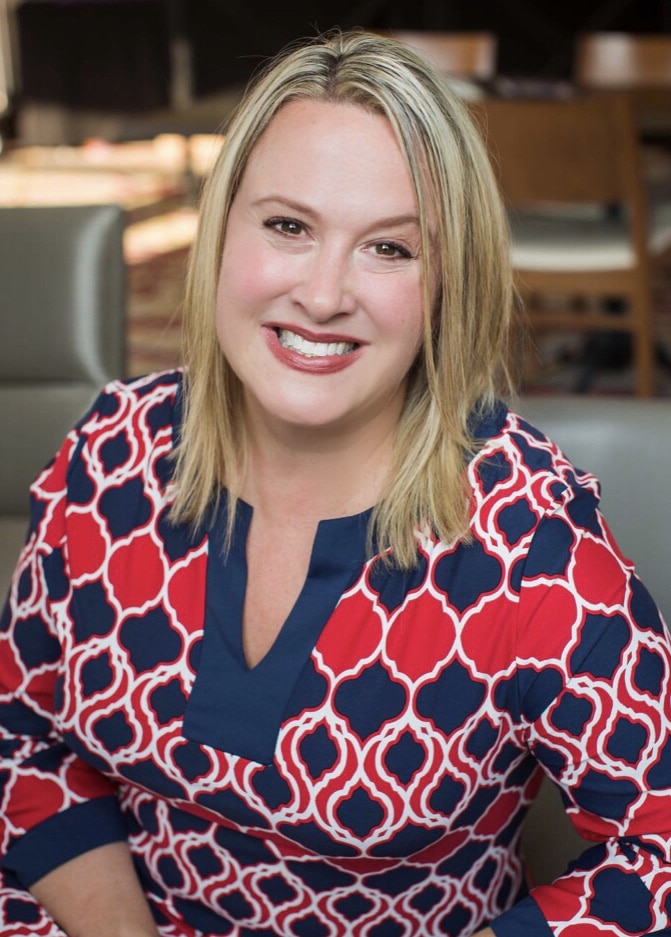
with Serah Morrissey, SPHR
We recently had the pleasure of interviewing Serah Morrissey, the new Council of Hotel and Restaurant Trainers (CHART) President, about everything from how she found her calling in Human Resources to the cutting-edge applications of HR and Training toward business evolution. She is the Area Director of Human Resources for WB Hotel Group which includes The Westin Edina Galleria and the Sheraton Bloomington Hotel in the Twin Cities of Minnesota. Morrissey is an expert in her field, and we’ve made this a two-part article, to be able to include all the useful insights we gleaned from her.
Morrissey served on CHART’s board of directors for three years before assuming her role as President. Her service feeds her need for continued learning and development and she enjoys answering questions from new board members and setting CHART’s strategic plan for the upcoming year.
CHART is entering its 50th year serving its members. The 99th and 100th conferences will take place in Morrissey’s term as President. The historical nature of this year motivates her to use her term to help shape a strong foundation for the next fifty years. One of her goals is to reach out to 50 CHART members representing different levels of tenure, and different parts of the Hospitality industry to get an idea of what they want the next 50 years to be like. Morrissey is using her signature quality of gathering personalized input to build on CHART’s already substantial support network.
After almost 20 years of Human Resources work, Serah has observed transitions in training practices, and how companies carry out workforce development. What may have worked many years in the past may not deliver the same results today and the changing dynamics of our workforce mirror societal changes. Companies can either adapt and maximize their opportunities to inspire and equip the current workforce, or they can hold strong to their traditional approach and risk an uphill battle to remain viable.
Morrissey says, “The biggest change is that training and development has moved from a one size fits all to a more customized approach. Traditional classroom methods with a school-like curriculum, an instructor, and full day of lecturing aren’t working. We know by now that’s not the most effective way to train.”
Morrissey keeps new concepts and skills alive through “microlearning” which focuses on delivering small, manageable chunks of information at a time. Her advice is to consider incorporating into your training and development smaller, more frequent content segments that require employees to use what they’ve learned and draw from their real experiences on the job. During longer sessions, use participant interaction as much as possible. These tactics can help employees internalize information faster so they can begin to use it and see the benefits.
Also, it’s important to deliver information in a personalized way. Morrissey says, “We have to be very deliberate with transforming training and development into something that’s personalized, reflective of how the individual learns best. Personalization is everything. It’s a lot of what we see with our guests now. Just as our guests have come to expect a personalized experience so too have our employees come to expect personalization in their training and development path.”
What does it look like? In terms of learning style, show employees how the information applies to them directly. If an employee can’t draw the connection to themselves in the moment, they won’t retain the information and be able to use it later. In terms of the learning process, personalize the intake of knowledge to individual learning styles.
Morrissey has always been a believer in individualization in learning. She graduated from a high school that piloted what’s called Outcome-Based Education (OBE).

Those that achieved the outcomes earlier went on to work on enrichment projects. While other students took all semester to achieve the outcomes and might have needed to come in before or after school for extra attention. The school completely abandoned the thought that one way of teaching by one teacher addressed how each student learned.
It was the early 1990’s and Morrissey could already see that many paths can lead to success in training, not one single path. Morrissey admits that while in some classes she was the early finisher, in others she needed extra help. The flexibility in the structure provided her and the other students enormous benefits.
She now looks at her professional training and development in the same way. Morrissey says, “Some people are going to get it faster than others. So I ask, what do we have in store for those that master certain skill levels and concepts quickly while not putting them through the same old redundant training. And how do we provide reinforcement and support for those that need more help?”
By paying closer attention to employees as individual contributors and individual people, Morrissey attests to seeing higher adoption and application of new skills and concepts. One of the biggest areas impacted is in higher levels of employee engagement.
She says, “We have a lot of long-time employees that come to work and do their jobs every day, year after year. And we’re asking questions like, are they just doing their job or are they loving what they do? Are they passionate? Are they proud of where they work? The more growth and development opportunities you offer, the more engaged people become.”
She says, “When engagement isn’t there, things we don’t always tie to engagement show up. One example is the employee break room. When people don’t clean up the break room, it means they don’t care. And the people that do care are in there cleaning up everyone else’s trash.”
Morrissey believes that building a better, more passionate and capable workforce means doing so from a foundation of appreciation for people and their individual character. This underlying value provides the groundwork for effective training and development programs.
Morrissey says, “You have to really care about people and have to have genuine authentic relationships with the people you’re working with.”
Join the Conversation.
How does your organization recognize employee individuality and account for individual development paths?
